SPRTN protease-cleaved MRE11 decreases DNA repair and radiosensitises cancer cells
- PMID: 33558481
- PMCID: PMC7870818
- DOI: 10.1038/s41419-021-03437-w
SPRTN protease-cleaved MRE11 decreases DNA repair and radiosensitises cancer cells
Abstract
The human MRE11/RAD50/NBS1 (MRN) complex plays a crucial role in sensing and repairing DNA DSB. MRE11 possesses dual 3'-5' exonuclease and endonuclease activity and forms the core of the multifunctional MRN complex. We previously identified a C-terminally truncated form of MRE11 (TR-MRE11) associated with post-translational MRE11 degradation. Here we identified SPRTN as the essential protease for the formation of TR-MRE11 and characterised the role of this MRE11 form in its DNA damage response (DDR). Using tandem mass spectrometry and site-directed mutagenesis, the SPRTN-dependent cleavage site for MRE11 was identified between 559 and 580 amino acids. Despite the intact interaction of TR-MRE11 with its constitutive core complex proteins RAD50 and NBS1, both nuclease activities of truncated MRE11 were dramatically reduced due to its deficient binding to DNA. Furthermore, lack of the MRE11 C-terminal decreased HR repair efficiency, very likely due to abolished recruitment of TR-MRE11 to the sites of DNA damage, which consequently led to increased cellular radiosensitivity. The presence of this DNA repair-defective TR-MRE11 could explain our previous finding that the high MRE11 protein expression by immunohistochemistry correlates with improved survival following radical radiotherapy in bladder cancer patients.
Conflict of interest statement
The authors declare that they have no conflict of interest.
Figures

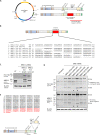
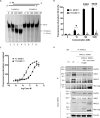
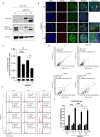
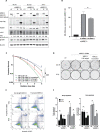
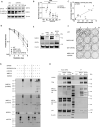
Similar articles
-
Stable maintenance of the Mre11-Rad50-Nbs1 complex is sufficient to restore the DNA double-strand break response in cells lacking RecQL4 helicase activity.J Biol Chem. 2021 Oct;297(4):101148. doi: 10.1016/j.jbc.2021.101148. Epub 2021 Aug 30. J Biol Chem. 2021. PMID: 34473993 Free PMC article.
-
C1QBP Promotes Homologous Recombination by Stabilizing MRE11 and Controlling the Assembly and Activation of MRE11/RAD50/NBS1 Complex.Mol Cell. 2019 Sep 19;75(6):1299-1314.e6. doi: 10.1016/j.molcel.2019.06.023. Epub 2019 Jul 25. Mol Cell. 2019. PMID: 31353207
-
Hepatitis B virus hijacks MRE11-RAD50-NBS1 complex to form its minichromosome.PLoS Pathog. 2025 Jan 3;21(1):e1012824. doi: 10.1371/journal.ppat.1012824. eCollection 2025 Jan. PLoS Pathog. 2025. PMID: 39752632 Free PMC article.
-
[Research Progress in the Roles of MRE11-RAD50-NBS1 Complex and Human Diseases].Zhongguo Yi Xue Ke Xue Yuan Xue Bao. 2024 Apr;46(2):232-241. doi: 10.3881/j.issn.1000-503X.15556. Zhongguo Yi Xue Ke Xue Yuan Xue Bao. 2024. PMID: 38686720 Review. Chinese.
-
MRE11-RAD50-NBS1 complex alterations and DNA damage response: implications for cancer treatment.Mol Cancer. 2019 Nov 26;18(1):169. doi: 10.1186/s12943-019-1100-5. Mol Cancer. 2019. PMID: 31767017 Free PMC article. Review.
Cited by
-
Engineered Immunologic Niche Monitors Checkpoint Blockade Response and Probes Mechanisms of Resistance.Immunomedicine. 2024 Jun;4(1):e1052. doi: 10.1002/imed.1052. Epub 2024 Jun 6. Immunomedicine. 2024. PMID: 39246390 Free PMC article.
-
Prediction of immune infiltration and prognosis for patients with urothelial bladder cancer based on the DNA damage repair-related genes signature.Heliyon. 2023 Feb 13;9(3):e13661. doi: 10.1016/j.heliyon.2023.e13661. eCollection 2023 Mar. Heliyon. 2023. PMID: 36873527 Free PMC article.
-
A novel compound, SYHA1813, inhibits malignant meningioma growth directly by boosting p53 pathway activation and impairing DNA repair.Front Oncol. 2025 Feb 20;15:1522249. doi: 10.3389/fonc.2025.1522249. eCollection 2025. Front Oncol. 2025. PMID: 40052125 Free PMC article.
-
Targeting histone deacetylase 6 (HDAC6) to enhance radiation therapy in meningiomas in a 2D and 3D in vitro study.EBioMedicine. 2024 Jul;105:105211. doi: 10.1016/j.ebiom.2024.105211. Epub 2024 Jun 24. EBioMedicine. 2024. PMID: 38917510 Free PMC article.
-
The Multiple Faces of the MRN Complex: Roles in Medulloblastoma and Beyond.Cancers (Basel). 2023 Jul 13;15(14):3599. doi: 10.3390/cancers15143599. Cancers (Basel). 2023. PMID: 37509263 Free PMC article. Review.
References
Publication types
MeSH terms
Substances
Grants and funding
LinkOut - more resources
Full Text Sources
Other Literature Sources
Medical
Research Materials
Miscellaneous

